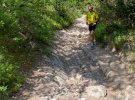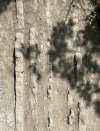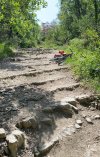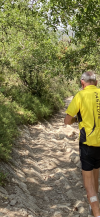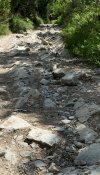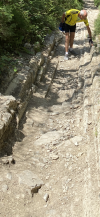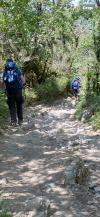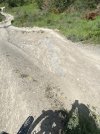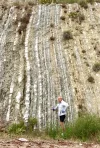I’ve often been tempted to give you all a geology lecture about the descent to Zubiri, but have held back for obvious reasons. I have however waxed lyrical about it in my almost-ready-to-go book about the geology of the camino. Zubiri gets a chapter of its own.
I’ll give you a brief rundown in the hope that you will realise that the choice to take the track is a no-brainer if you have the slightest interest in whats going on under your feet.
The rocky outcrops belong to a famous geological formation known as the Flysch. Those of you who have been through Zumaia on the Norte have already seen the spectacular exposures of the SAME rocks cropping out in the cliffs and the beach. The Flysch formation continues under the landscape more or less all the way from the coast, beyond what we see at Zubiri. Here’s a look-see.
View attachment 167038
The rock layers are ‘couplets’ of hard limestone and soft marl (that’s a muddy limestone which erodes away easily). The photo is looking straight down at the track. You can clearly see the hard and soft layers alternating. (There are a couple of thousand of them in the whole sequence. In the picture above, the layers are perfectly vertical. But the dip of the layers varies considerably as you progress (very slowly I hope) down the hill.
This was taken near the top.
View attachment 167039
Obviously a very different situation. The layers here are horizontal and you have to step down them. Notice that ‘risers’ are the eroded marl layers.
On most other occasions, the layers emerge at the surface either vertically or at an oblique angle - here at maybe 45 degrees.
View attachment 167040
The individual layers often vary in thickness. If they are dipping at an angle and broken off : it ain’t pretty (unless you’re me).
View attachment 167041
Sometimes the channels are deeply eroded and wide like here.
View attachment 167042 Thicker layers at the edge can look like man-made stone walls.
But if you navigate with care I think it’s well worth the time.
View attachment 167043
This last bit would be a problem when wet, but you’re almost there. You can see the broken surface of a bed dipping gently towards you.
View attachment 167044
There’s much more to say, but here endeth…






